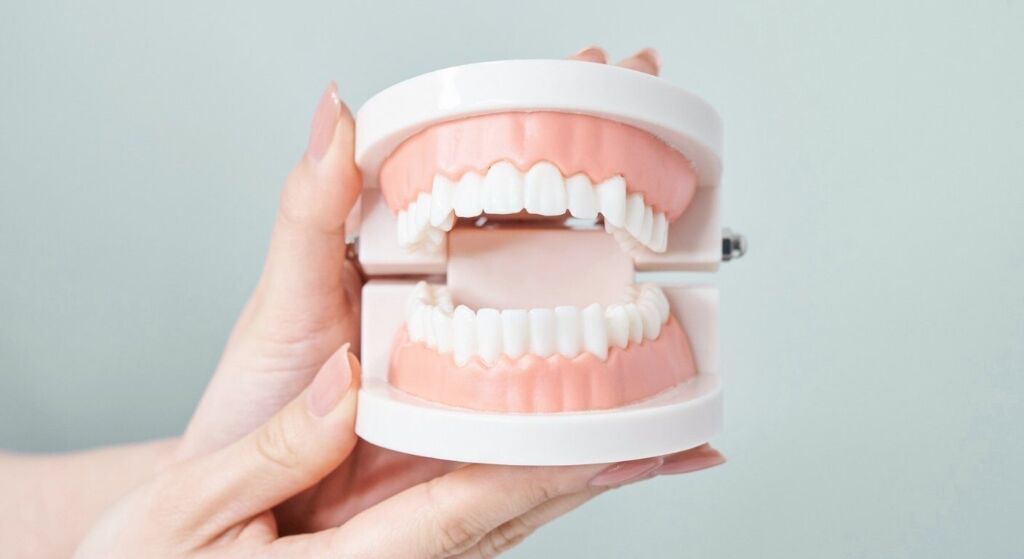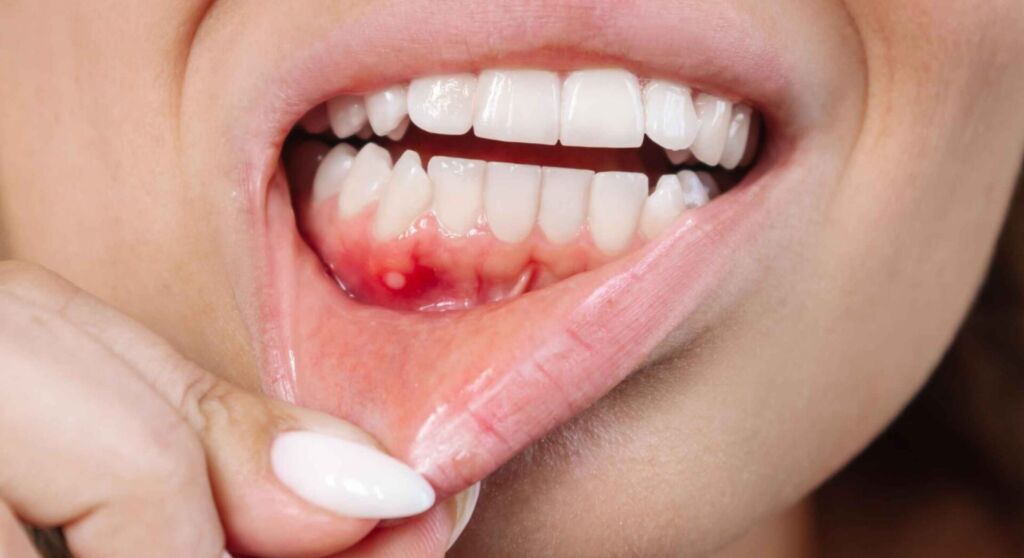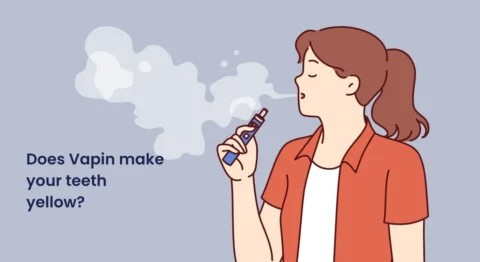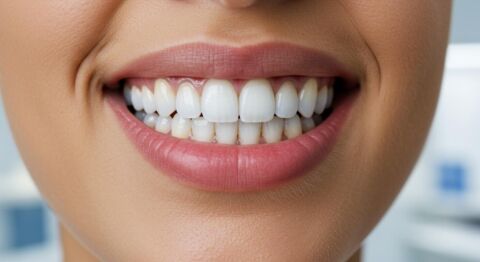How to treat burned gums from teeth whitening? In case the whitening gel contacts your gums, it may irritate them or cause pain or even a chemical burn. This is a widespread issue since the vast majority of whitening products incorporate the use of peroxide, which may cause irritation to the soft gum tissue. The bad news is that the situation can be relieved only when you do it as soon as possible. In this guide, you will find out how to deal with the burned gums immediately, easy home-based medicine to quickly recover, and when you need to visit a dentist. Use these steps to make the reduction of the discomfort, the preservation of the gums, and the healing process as safe as possible.
Table of Contents
ToggleQuick First Aid—First 0–30 Minutes for Burned Gums From Teeth Whitening

If your gums burn from whitening, the first 30 minutes are critical. Act quickly to stop the damage and ease the pain. Follow these steps right away:
- Stop the whitening treatment. Take the strip or tray to the extent you feel burning. Do not wait. The longer the duration of leaving it, the worse the burn.
- Rinse with cool water. Swish around for 30-60 seconds and spit. Repetition two or three times till the stinging subsides. Do not swallow the rinse. The cool water washes away the leftover gel and soothes irritated tissue.
- Make a saltwater rinse. Mix 1/2 to 1 tsp. salt with 8 oz. (240 ml.) warm water. Swish, swish, swish for 1530 seconds, spit. Do this every 2–4 hours. In case it is stinging, cut down on salt to 1/2 teaspoon. Saltwater decreases bacteria, decreases the level of inflammation, and enables the gums to recover.
- Use a cold compress on the outside of your mouth. Cover ice cubes or a cold pack with a clean cloth. Apply it on the sore gums against the cheek for not less than 10 to 20 minutes, and then take it off in the same time. Repeat as needed. Do not put ice directly on the gum tissue. The cold will assist in swellings and numb pain.
- Avoid harsh “DIY fixes.” Do not put hydrogen peroxide, baking soda paste, or any other strong chemicals on the burn. These may aggravate the distress. This is safer and better done with clean rinsing with a combination of water and salt.
Quick Caution
If the whitening product burned badly, if the pain feels severe, or if the gums start turning white or peeling, stop home care. Call your dentist right away for professional treatment.
Home Care for Burned Gums After Whitening for the Next 1–7 Days

Your gums will still need care for a week after the first aid. It takes time to heal, but the right routine will help you get better faster and feel less pain. Do these things every day:
- Do salt rinses often. In 8 ounces of warm water, mix in 1/2 teaspoon of salt. Swish for 20 to 30 seconds, then spit it out. Do this 3–4 times a day, after meals and before bed. Don’t use hot water; use warm water. Cut the salt in half if it hurts.
- Be gentle with your mouth hygiene. Use a toothbrush with soft bristles to brush your teeth twice a day. Move in small circles of light. Don’t scrub the burned area. Be careful when you floss so you don’t cut your gums. Potassium nitrate in a sensitive toothpaste can help with sensitivity and ease irritation.
- Stay away from things that bother you. Don’t use mouthwashes that contain alcohol, eat spicy or acidic foods, or drink hot drinks. They take a long time to heal and can make pain worse. Use a straw to keep warm drinks away from sore spots if you have to.
- Relieve pain safely. OTC oral gels can be used to treat pain, but within the labeling guidelines. Benzocaine products should be used with caution. They have uncommon risks and cannot be used on children below the age of 2. Ask your dentist or pharmacist in case you are not sure.
- Resort to natural calming-down products. Place a coating of aloe vera gel on the burn that is oral grade. It can restrain and pacify the tissue. Diluted clove oil may also be dabbed and should be tested because it is likely to be stinging. Never swallow large amounts.
Healing time
The majority of mild cases of gum burns heal in 2-3 days. The normal duration of healing is 7-14 days. In case gums remain white, peel so extensively, or pain worsens, seek your dentist.
When to See a Dentist or Emergency Care for Whitening Gums Burns
Most mild gum burns heal on their own at home. But sometimes, it’s better not to wait. Call your dentist right away if you notice any of these warning signs:
- Pain that keeps getting worse or swelling that starts to spread.
- White patches that don’t fade within 2–3 days.
- Bleeding that continues even after a gentle rinse.
- Trouble breathing or swallowing, or a high fever.
- Possible infection—like pus, a bad taste, or a strong odor.
Important
If you’ve used a strong peroxide whitening gel and your symptoms feel like more than just mild irritation, don’t wait it out—see a dentist right away. Both the NHS and the American Dental Association caution that chemical burns that go beyond mild discomfort need professional care.
Prevention: How to Avoid Gum Burns Next Time
The best way to deal with gum burns from whitening treatment is to prevent them before they happen. Use this useful list to make sure your whitening is safe:
- Pick products you can trust: Use trays or strips that fit your teeth from well-known brands. Don’t use trays that don’t fit well because leaking gel is the main cause of gum burns.
- Stick to the clock: longer whitening doesn’t mean better results. Always do what the label says about timing.
- To protect your gums, put a thin layer of petroleum jelly along the edges of your gums, or ask your dentist for custom-fit trays that keep the gel in the right place.
- Try it out before you use it all the time:First, do a patch test for 10 to 15 minutes. Stop right away if you feel stinging or irritation.
- Stay away from when your gums are unhealthy: If you have gum disease, cuts, or ulcers, don’t whiten your teeth. Wait until your mouth has fully healed.
Think about getting your teeth professionally whitened. If your gums are sensitive, your dentist can give you gum protection gels and barriers that lower the risk of burning by a lot.
By following these steps, you can achieve whiter teeth while keeping your gums safe, healthy, and pain-free.
Final Takeaway
It can be scary when your gums burn from teeth whitening, but most of the time they heal quickly with the right care. Act quickly: wash, soothe, and protect the area. While your gums heal, be gentle with them every day and stay away from things that could irritate them. Always be aware of the warning signs. If you have pain, swelling, or white patches that last more than a few days, call your dentist. To avoid problems, use trays that fit well, follow the directions, and protect your gums before whitening. You can have a brighter smile without hurting your gums if you take the right steps.
Frequently Asked Questions About Gum Burns from Teeth Whitening
How long do whitening burns last on gums?
Most mild gum burns from whitening get better in 2 to 7 days.It could take up to 14 days for the healing to happen.If the pain or white spots don’t go away after a week, see your dentist.
Can whitening strips cause chemical burns on gums?
Yes. There is a chance that the whitening gel will burn your soft gum tissue if it gets on it. This happens a lot when trays or strips don’t fit right. Stop using it and rinse right away.
Should I use mouthwash after a gum burn?
Don’t use mouthwashes that contain alcohol because they can irritate tissue and slow down healing. Instead, gently rinse your mouth with saltwater or ask your dentist for a mouthwash that doesn’t have alcohol in it.
Is benzocaine safe for gum burns?
Adults can use OTC benzocaine gels for a short time, but they should always read the label. Not for kids under 2 years old. The FDA warns of rare risks, so consult your dentist if unsure.



